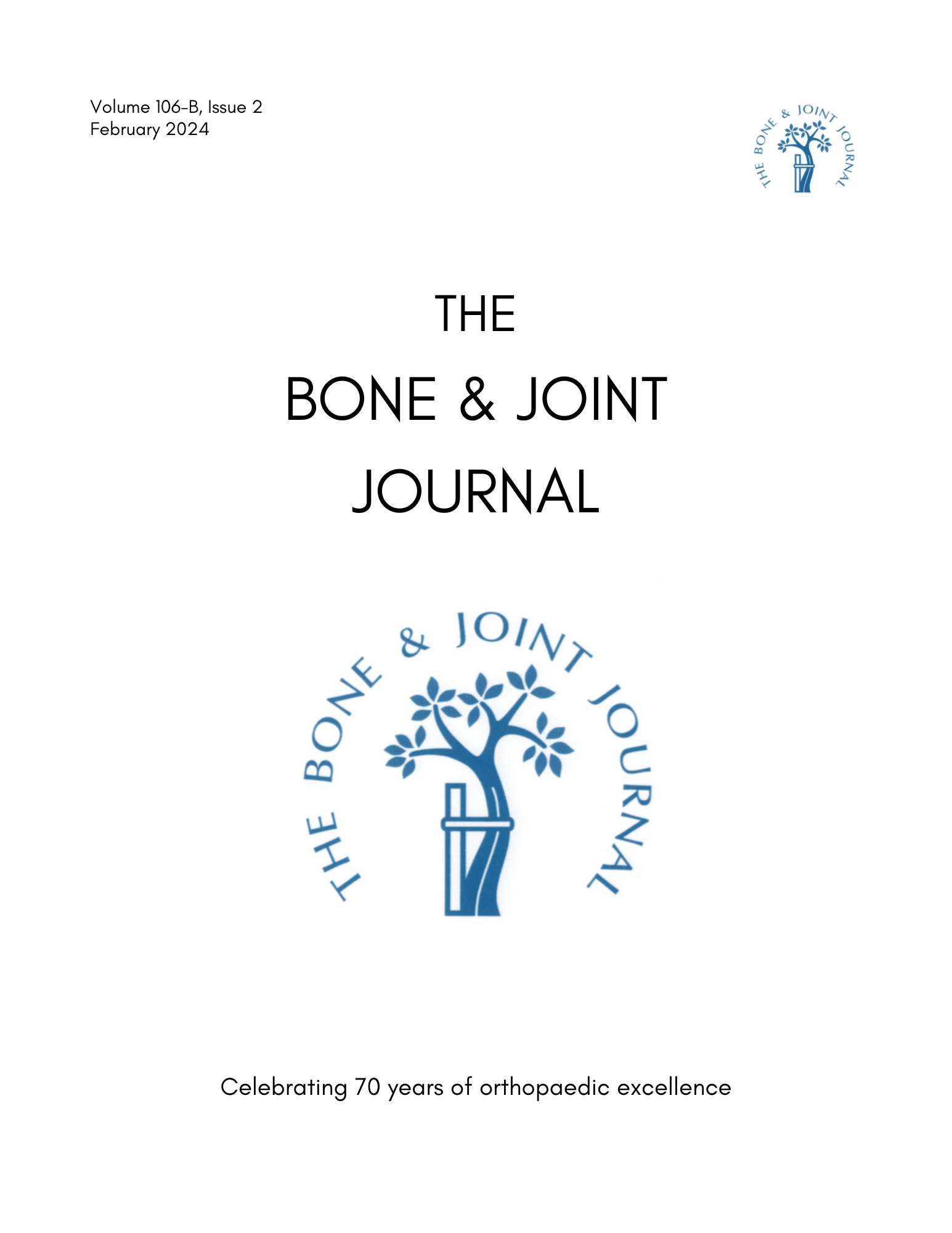
Femoral neck fractures: Similar function, but higher revision rates using PCU-THR vs HA

Femoral neck fractures: Similar function, but higher revision rates using PCU-THR vs HA
A comparison of hemiarthroplasty with a novel polycarbonate-urethane acetabular component for displaced intracapsular fractures of the femoral neck: A randomised controlled trial in elderly patients
Bone Joint J. 2013 May;95-B(5):609-15. doi: 10.1302/0301-620X.95B5.31083Synopsis
96 patients aged 70 or over who had suffered femoral neck fractures (32 at final follow-up) were randomized to receive either a total hip replacement with a polycarbonate-urethane acetabular component (PCU-THR), or a hemiarthroplasty (HA) treatment. The purpose of this study was to evaluate the functional outcomes associated with these two treatments. Results indicated that there was no difference in function at 3 months, 1 year, 2 years or 3 years post-operation and that pain was worse in the PCU-THR group at 1 and 2 years. Lastly, higher revision rates were observed in the PCU-THR group.
Was the allocation sequence adequately generated?
Was allocation adequately concealed?
Blinding Treatment Providers: Was knowledge of the allocated interventions adequately prevented?
Blinding Outcome Assessors: Was knowledge of the allocated interventions adequately prevented?
Blinding Patients: Was knowledge of the allocated interventions adequately prevented?
Was loss to follow-up (missing outcome data) infrequent?
Are reports of the study free of suggestion of selective outcome reporting?
Were outcomes objective, patient-important and assessed in a manner to limit bias (ie. duplicate assessors, Independent assessors)?
Was the sample size sufficiently large to assure a balance of prognosis and sufficiently large number of outcome events?
Was investigator expertise/experience with both treatment and control techniques likely the same (ie.were criteria for surgeon participation/expertise provided)?
Yes = 1
Uncertain = 0.5
Not Relevant = 0
No = 0
The Reporting Criteria Assessment evaluates the transparency with which authors report the methodological and trial characteristics of the trial within the publication. The assessment is divided into five categories which are presented below.
3/4
Randomization
2/4
Outcome Measurements
4/4
Inclusion / Exclusion
4/4
Therapy Description
4/4
Statistics
Detsky AS, Naylor CD, O'Rourke K, McGeer AJ, L'Abbé KA. J Clin Epidemiol. 1992;45:255-65
The Fragility Index is a tool that aids in the interpretation of significant findings, providing a measure of strength for a result. The Fragility Index represents the number of consecutive events that need to be added to a dichotomous outcome to make the finding no longer significant. A small number represents a weaker finding and a large number represents a stronger finding.
Why was this study needed now?
Femoral neck fractures in the elderly can be treated with internal fixation, hemiarthroplasty (HA) or total hip replacement (THR), depending on the patient's age and their ability to cope with surgery. Previous studies have established certain disadvantages for these treatment methods, with THR being associated with higher intra-operative blood loss and increased incidence of dislocation, and HA being associated with higher incidence rates of acetabular erosion. In order to accommodate these drawbacks, a new treatment consisting of a large metal femoral head coupled with a pliable, 2.7 mm thick hydrophilic polycarbonate-urethane (PCU) acetabular component was proposed. The present study aimed to compare the effectiveness of the PCU-THR treatment versus bilateral hemiarthroplasty in elderly patients suffering from femoral neck fractures.
What was the principal research question?
Did total hip replacement surgery with a polycarbonate-urethane (PCU) acetabular component improve function compared to hemiarthroplasty in elderly patients with femoral neck fractures 3 years post-treatment?
What were the important findings?
- There was no difference between groups in post-operative hospital stay, operative blood loss or operating time (p>0.05).
- No difference was found in total Harris Hip scores at 3 months (p=0.878), 1 year (p=0.466), 2 years (p=0.342) or 3 years (p=0.118).
- For the pain subscore of the Harris Hip index, the PCU-THR group demonstrated significantly greater pain at 1 year (p=0.006) and 2 years (0.019) post-operation compared ot the HA group, there was no difference in this subscore between groups at 3 months (p=0.158) or 3 years (p=0.073).
- For the function subscore of the Harris Hip index, there were no differences between groups at 3 months (p=0.471), 1 year (p=0.466), 2 years (p=0.853), or 3 years (p=0.417) post-operation.
- At final follow-up, there was no difference between groups in heterotropic ossification (p=0.942).
- 6 patients in the PCU-THR group underwent revision surgery and 1 patient in the same group is awaiting re-operation. The main cause for revision was dislocation or wear of the PCU cup. Revision surgery was not required for any of the patients in the HA group.
- The three-year survival rate in the PCU-THR group was 0.841 (95% CI 0.680 to 0.926).
What should I remember most?
There was no difference in function between treatment of femoral neck fractures in the elderly with a total hip replacement and a polycarbonate-urethane acetabular component (PCU-THR), versus a hemiarthroplasty (HA) procedure at 3 months, 1 year, 2 years and 3 years post-operation. Pain was significantly worse in the PCU-THR group at 1 and 2 years post-operation and there were also more revision surgeries required in the PCU-THR group (n=6) compared to the HA group (n=0).
How will this affect the care of my patients?
The results from this study suggest that the use of a polycarbonate-urethane acetabular component in total hip replacements is not recommended over a hemiarthroplasty procedure in the treatment of femoral neck fractures in the elderly. This finding should be approached with caution, however, due to the large loss to follow-up in this study. Functional results and complication rates should be evaluated in larger studies to help guide treatment in this area.
Learn about our AI Driven
High Impact Search Feature
Our AI driven High Impact metric calculates the impact an article will have by considering both the publishing journal and the content of the article itself. Built using the latest advances in natural language processing, OE High Impact predicts an article’s future number of citations better than impact factor alone.
Continue



 LOGIN
LOGIN

Join the Conversation
Please Login or Join to leave comments.